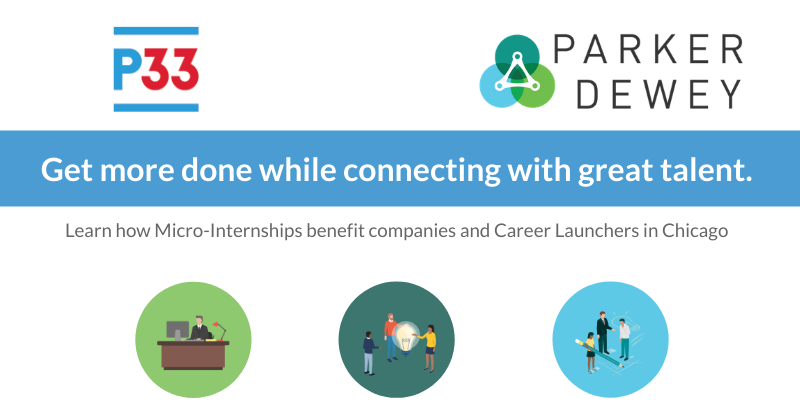
Change your entry-level talent strategy to boost business growth: here’s how
Millennials are interested in being a part of emerging, exciting companies, and growing along with them. In fact, almost half of Generation Y employees work for companies with fewer than 100 employees, indicating their clear preference for experiences with innovative companies over corporate environments. If you run a rapidly growing company, you can use this trend to your advantage.
But how can you ensure you’re approaching entry-level talent acquisition in a way that boosts business growth? Follow these guidelines:
Have flexible resources on-demand
Your company’s circumstances likely evolve rapidly, and you need to be nimble enough to adapt to changes in workloads, client commitments, and staffing at a moment’s notice. If you’re not flexible, you won’t survive the inevitable, unpredictable change that is a constant at nearly every fast-growing company.
But you also need to protect your bottom line. Having extra entry-level staff on your payroll for the sake of preparedness during times when your workload is light just isn’t practical or financially responsible.
So how do you stay both lean and nimble? Build a network of freelancers, or better yet, use Parker Dewey to get access to talented Career Launchers who can handle your overflow work on-demand. In fact, some of the most common overflow work (e.g. lead generation, market research, and content creation) can be handled by a Career Launcher.
One advantage of working with Career Launchers over temps or traditional freelancers is that they allow you to shift your resources to respond to current demands and build your entry-level talent pool for the future at the same time. (And on Parker Dewey, if you end up hiring a Career Launcher for a job or internship down the road, you can do so free of charge.) But in the meantime, you’ll have access to the talent you need, when you need it, with no unnecessary expense.
Clearly define the roles
Entry-level roles can be difficult for companies to define because they often serve as a catch-all for the tasks your more senior team members no longer have the bandwidth or desire to do. But it’s important that you define your company’s entry-level responsibilities as carefully as its management roles, and that you tie those to your company’s bigger picture strategy. You can only boost business growth and ensure scalability through strategic hiring, and that starts with understanding exactly what you're looking to get out of every role.
Before expanding the team, think carefully about your vision for the company during the next three, five, and 10 years. Then, create a “future ideal” org chart that outlines all the specific seats or roles you’ll need to fill in order to achieve your goals. This will require you to check your egos at the door and focus on the future you want to create rather than your current situation. It will also force you to clarify your assumptions about the talent you need to succeed.
Next, define specific responsibilities and job descriptions for each seat. Work from the leadership level downward, but spend just as much time at the bottom of your org chart as you do at the top. Vague language like “other administrative tasks as needed” have no place in these job descriptions, even the entry-level ones. This exercise is all about creating clarity and identifying gaps in your current structure that you need to work toward filling in order to boost business growth.
For those seats that are unoccupied, you can use short-term engagements to assess if you have appropriately defined the responsibilities, or even if there is value generated from the role. For example, should your Social Media Manager focus on content creation, competitive monitoring, customer engagement, or some other combination of tasks? Do these responsibilities drive additional sales or other business benefits? As an emerging company it is vital that you address these questions before you start looking for a full-time candidate.
Once this exercise is complete, you should have a clear picture of where your organization is headed from a staffing perspective and a good sense of which seats you need to prioritize filling next.
Try out talent who could boost business growth before committing to the hire
Hiring is a challenge at every level, but choosing the best fit who will actually boost business goals from a pool of entry-level candidates often feels particularly like a gamble.
Why? Because entry-level candidates typically don’t have a long work history that can help you assess their skills and fit and academic pedigree does not predict success. Even references or work samples from past internships or part-time college jobs typically aren’t enough to give you a clear picture of their skills or potential.
The only way to know for sure if someone is the right fit for the role you’ve defined and can help boost business growth is to test them out through an internship, freelancing, or project-based assignments before making a full-time offer. Doing so will allow you to more accurately assess skills, aptitudes, and cultural fit before committing to a hire and can help you perfect the definition of the role itself.
Stop competing for the same talent and improve diversity
To put it bluntly, you’re not Google. You don’t have the resources or the name recognition to drive scores of talented recent graduates to your careers page like they do. You already know this, but it’s important to keep it top of mind in order to prevent your company from basing its hiring standards on theirs. By trying to attract the exact same entry-level job seekers who are interested in huge companies, you’ll miss out on incredible candidates who want to work for a company like yours and who may have more diverse backgrounds and interests. You will also find that many of these individuals have more grit, drive, and loyalty given the work they put into finding and proving themselves to your company.
And this issue isn’t exclusive to smaller companies. Big enterprises and small businesses alike think they would love to hire an Ivy League graduate with a 4.0 GPA. If you look beyond on-paper credentials, you’ll find high-caliber talent that is actually passionate about what you do and has the same (or better) skills than their more pedigreed counterparts.
Instead of recruiting at the same career fairs at the same colleges you (and Apple, and Goldman Sachs, and McKinsey, and...) always attend, try recruiting outside of your usual network. Be open to trying out talent from a school that you haven’t heard of or major you normally wouldn’t consider. You might find these individuals to be even more driven and adaptable than a coveted Ivy League grad or business major. Many CEOs were liberal arts majors and worked their way up because they had the “soft skills” like passion, integrity, and intelligence to get them there.
And if you need yet another reason to broaden your entry-level talent pool, consider this: hiring employees with similar backgrounds also promotes group-think and can limit innovation. This is evidenced by the fact that diverse companies outperform less diverse ones. We’ve cited this research before but we feel it can’t be emphasized enough: gender-diverse companies are 15% more likely and ethnically-diverse companies are 35% more likely to outperform other, less diverse companies.
The takeaway
With these tips mind, you’ll be able to hire entry-level talent more effectively and achieve better outcomes for both employees and your company.
By leveraging the Career Launchers on Parker Dewey, you can maintain resource flexibility, learn what your company truly needs, and build a diverse talent pool interested in the work your company does. Start trying out entry-level talent capable of contributing to your business’ growth by posting a project on Parker Dewey today.
And if you’re struggling with junior-level recruiting and talent, download our eBook on engaging students and improving hiring outcomes by adding initiatives like Micro-Internships and campus mentoring to your entry-level hiring strategy.





